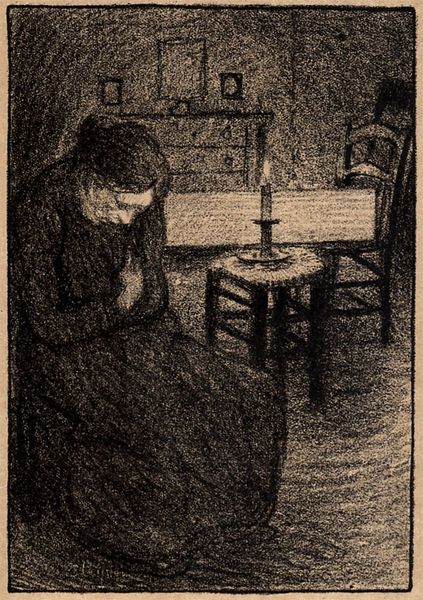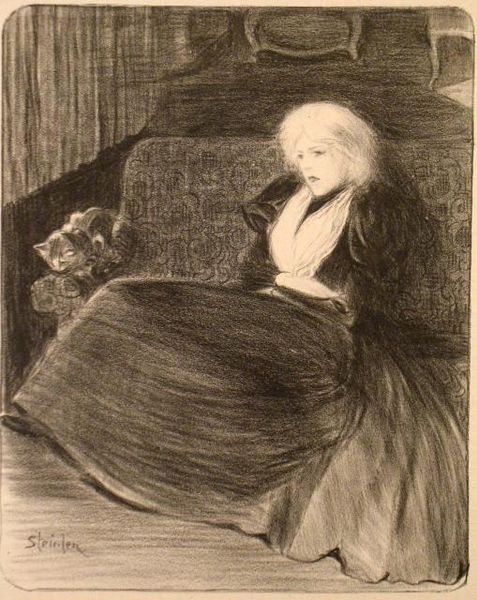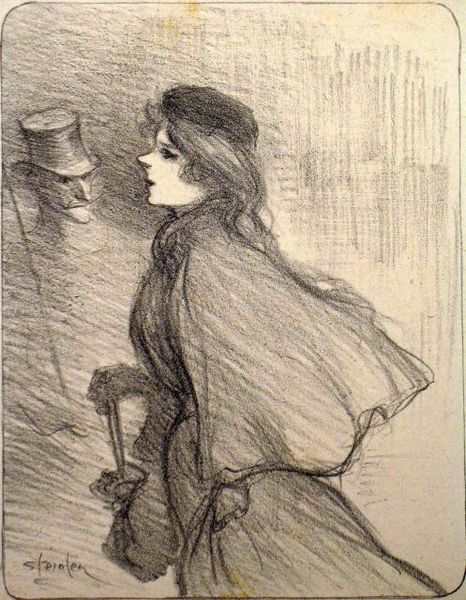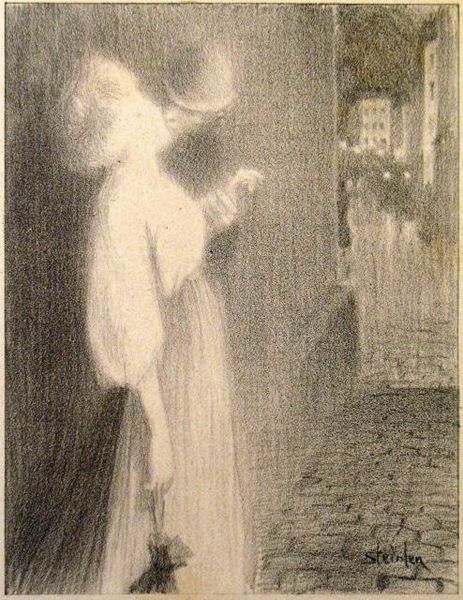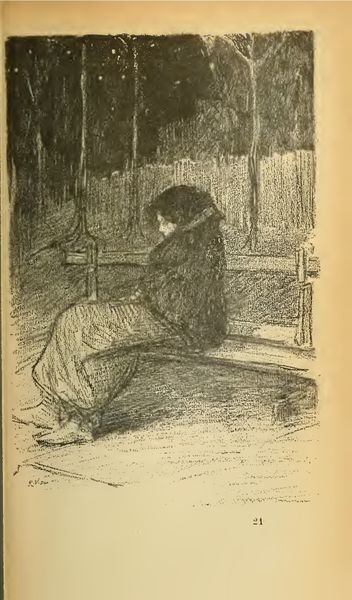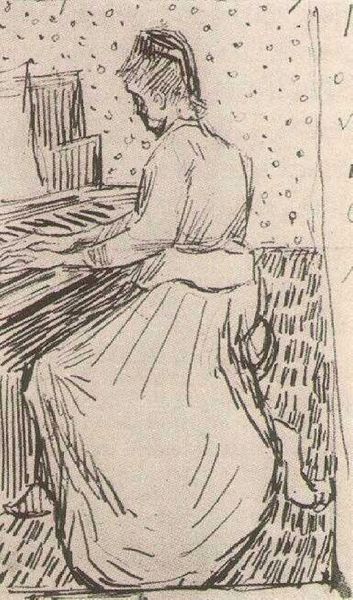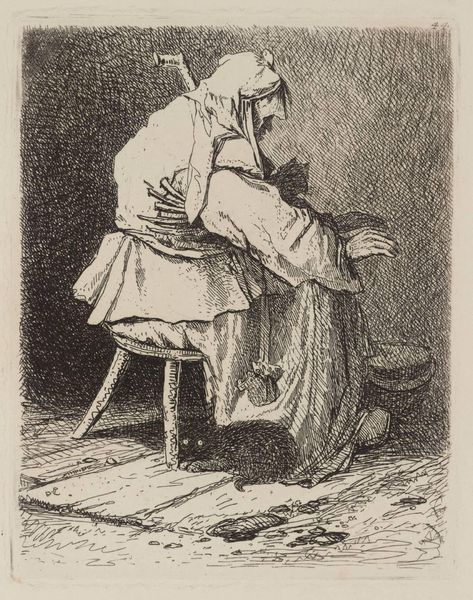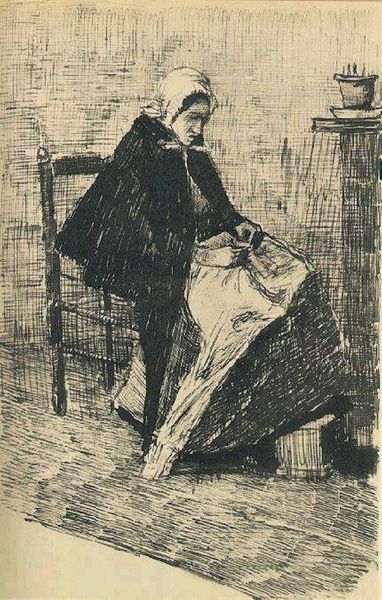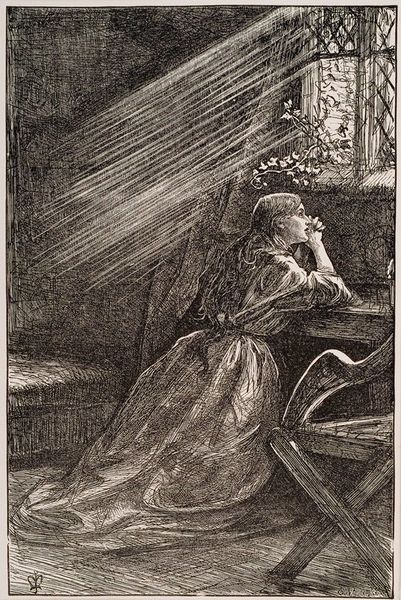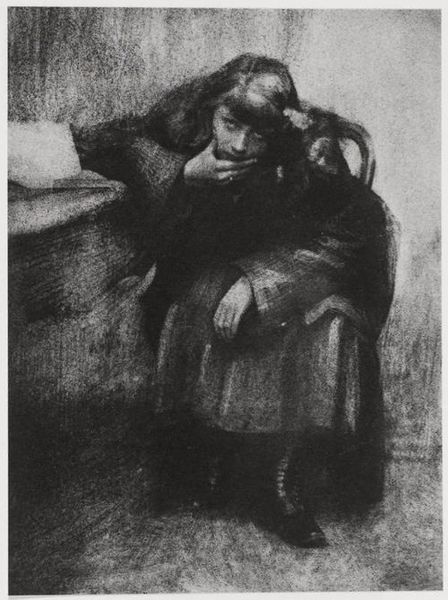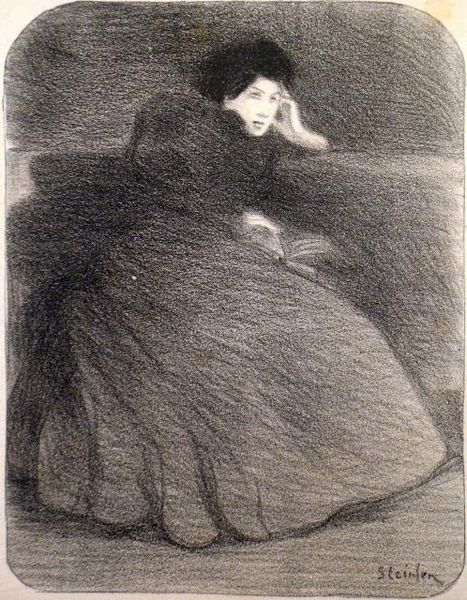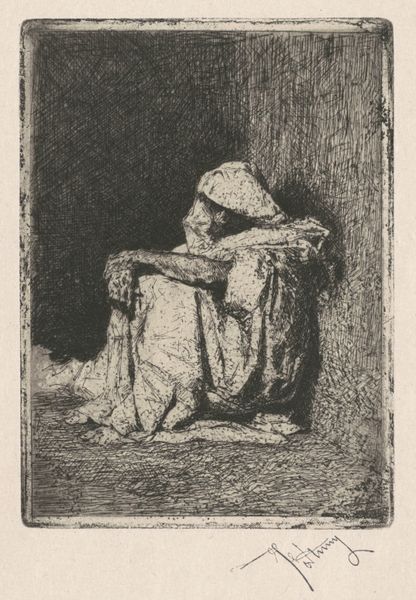
drawing, print, graphite, poster
#
portrait
#
drawing
# print
#
pencil sketch
#
text
#
line
#
symbolism
#
graphite
#
sketchbook drawing
#
poster
Copyright: Public domain
Editor: Here we have Théophile Alexandre Steinlen’s "Noel" from 1894. It seems to be a drawing or print, perhaps graphite on paper. It’s very somber, almost mournful in tone. There's a mother and child, huddled together. What do you see in this piece beyond just the surface level? Curator: What I see is a potent commentary on class and social conditions in late 19th-century Paris. Steinlen was deeply engaged with the lives of the working class. Consider the starkness of the scene, the plain clothing, the apparent lack of warmth, all conveyed through the medium itself, this rough sketchiness. It wasn’t just a stylistic choice, but also a statement about the realities faced by many at the time. What feeling do you get from the composition, knowing this context? Editor: It definitely feels less like a sentimental Madonna and Child image now, and more like a reflection of poverty and hardship. It makes me wonder about the “Noel” title and if that is ironic. Curator: Precisely. Christmas, a time often associated with warmth and abundance, juxtaposed with this image suggests a pointed critique. Think about the emerging socialist movements of the time, how artists began using their work to expose societal inequalities. Steinlen was part of that wave. Editor: So the very act of creating this image, especially as a print potentially for wider distribution, was a political statement? Curator: Absolutely. He is bringing awareness to the plight of those marginalized in society. Now, how might this resonate with contemporary concerns about economic disparity? Editor: That makes it even more impactful. The focus on social commentary is something that really comes through knowing the background. Curator: Exactly. It bridges the gap between art history and current conversations on social justice, race, and class. It is about reflecting critically on issues that we continue to struggle with today. Editor: That’s helped me understand this work in a totally new way, far beyond just the image itself.
Comments
No comments
Be the first to comment and join the conversation on the ultimate creative platform.
